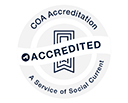Auto Safety
Whether you’re taking your newborn home from the hospital in her first car seat or handing your newly-licensed teenager the keys to her first car, one of the most important jobs you have is keeping your children safe in and around the car and on the road.
Heat Stroke
NEVER leave your child alone in a car; even for a minute. Although it might be tempting to leave a baby alone in a car while you quickly run into the store, leaving a child alone in a car can lead to serious injury or death from heatstroke. Young children are particularly at risk, as their bodies heat up three to five times faster than an adult’s.
Kidsandcars.org offers these safety tips:
- Put something you'll need like your cell phone, purse or briefcase on the floor board in the back seat.
- Get in the habit of always opening the back door of your vehicle every time you reach your destination to make sure a child hasn’t been left behind.
- Keep a stuffed animal in the child's car seat when it’s not occupied. When the child is placed in the seat, put the stuffed animal in the front passenger seat. It's a visual reminder that anytime the stuffed animal is up front you know the child is in the back seat in a child safety seat.
- Use drive‐thru services when available; and use your debit or credit card to pay for gas at the pump.
- If you see a child alone in a car, call 911 immediately. Your call could save a life.
Download and print the poster and safety checklist for more information.
Car Seats
Vehicle crashes are one of the leading causes of death for children between 1 and 13 years old. The good news is using car seats correctly helps keep children safe when they are riding in a vehicle.
- Choose the right seat. Make sure your child is the correct height, weight and age for the seat.
- Keep your baby in a rear-facing car seat for as long as possible – usually until about 2 years old. Rear-facing seats have the maximum protection for your baby’s head, neck and spine.
- Check the label. Child safety seats do have expiration dates. The label will also tell you the height and weight limits of the seat.
- Make sure the child safety seat is installed correctly.
Frontovers and backovers
Many preventable injuries and deaths occur in driveways or parking lots when drivers are unaware that children are near vehicles. These injuries are easily prevented by following a few simple tips:
- Before you drive away, take a few seconds to walk all the way around your parked car to check for children.
- Create safe play areas for children, away from parked or moving vehicles. Consider making your driveway a toy-free zone.
- Hold your child’s hand while walking near moving vehicles and in driveways and parking lots.
Trunk entrapment
Children may think that the trunk of a car is the perfect place to hide during a game of hide and seek. However, children do not understand how quickly the temperature inside the trunk of a vehicle can rise. Use these tips to lessen the chance that your child will become trapped in your vehicle’s trunk:
- Keep vehicles locked at all times; even when parked in the garage or driveway.
- Keep keys and remote openers out of children’s sight and reach.
- Teach children that trunks are for transporting cargo and are not safe places to play.
- Show your child how to find and use the emergency trunk release. Remember that very young children may not have the strength or ability to open the release bar.
- If your child is missing, check vehicles and trunks. If your child is locked in a car, get him or her out as quickly as possible and call 911.
Need help or want to know more?
Safe Kids Worldwide offers additional tips for keeping your children safe in and around vehicles.


